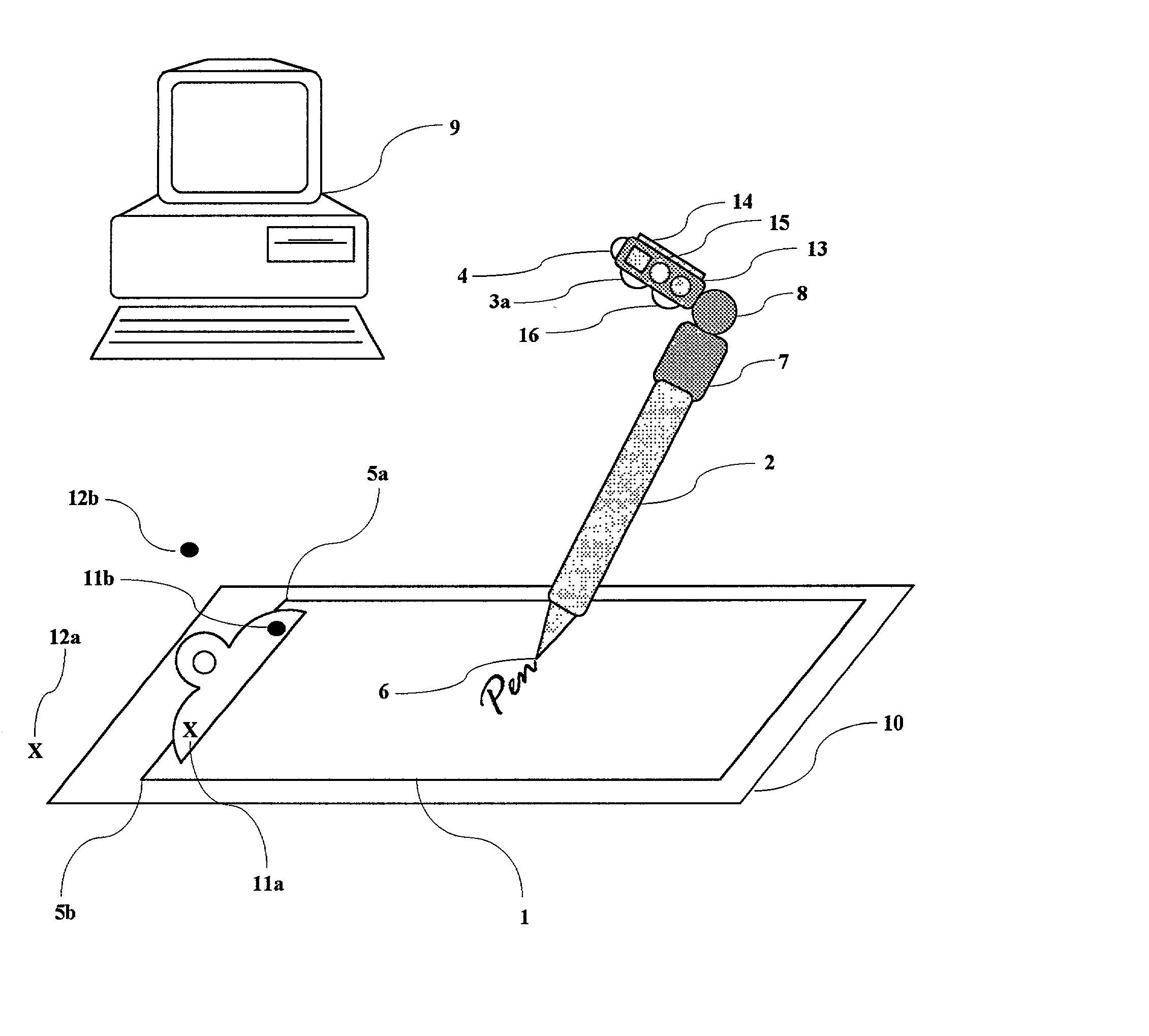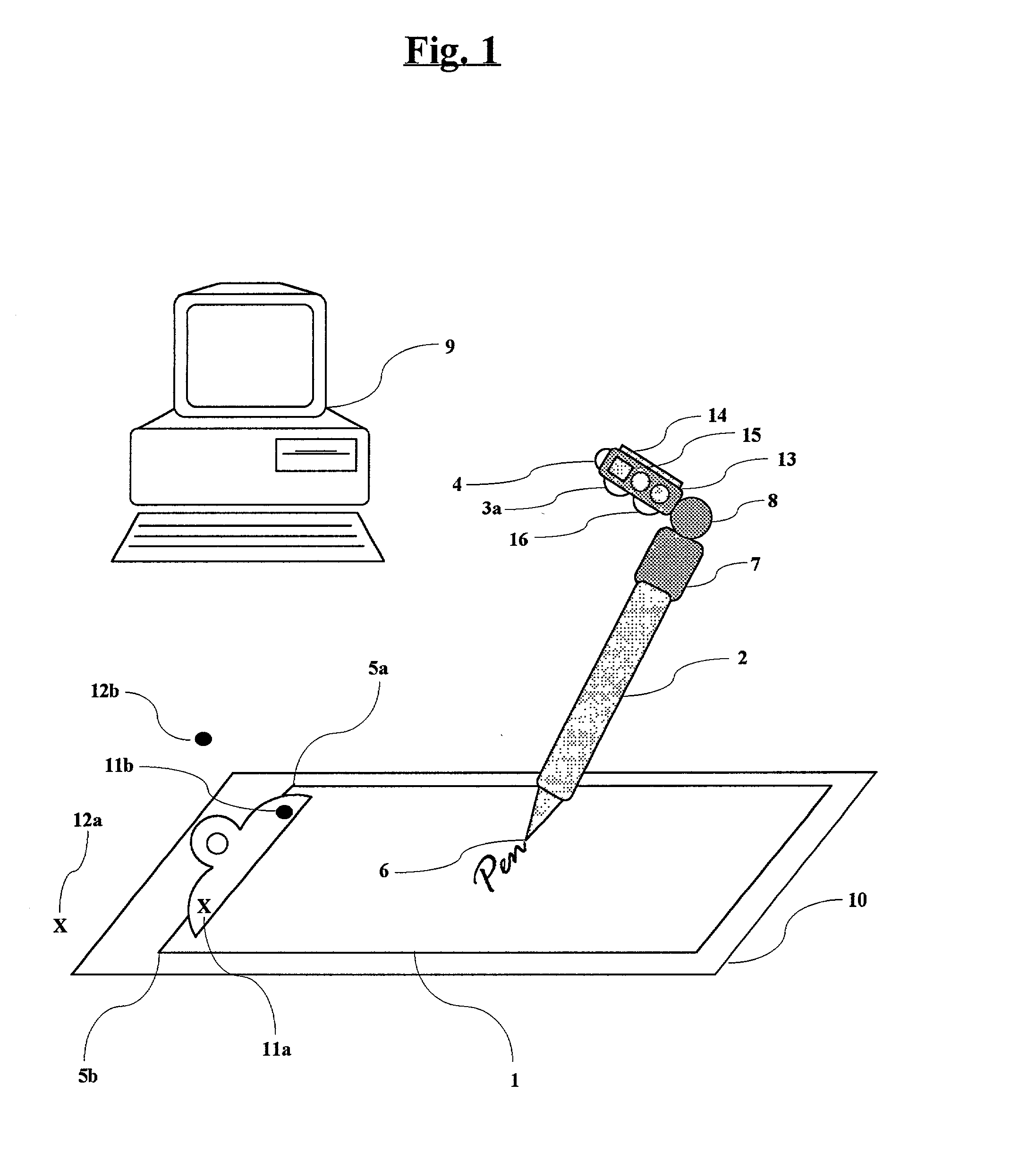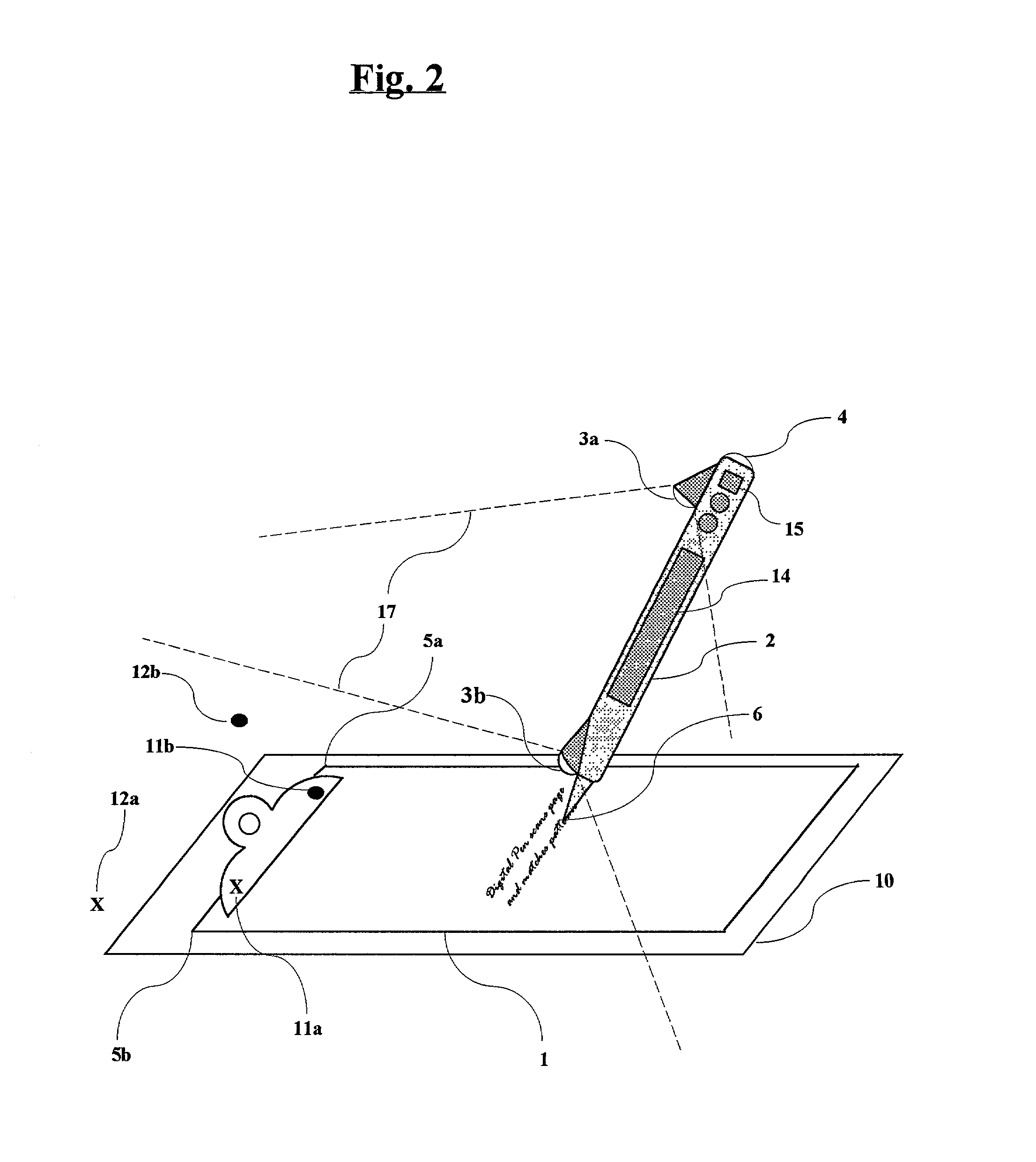Optical position determination on any surface
a technology of optical position determination and surface, applied in the field of optical position determination on any surface, can solve the problems of expensive tablets, difficult transportation, and the inability of tablets to distinguish between the stylus and another object pressing, and achieve the effect of accurate reading of passive coded surfaces
- Summary
- Abstract
- Description
- Claims
- Application Information
AI Technical Summary
Benefits of technology
Problems solved by technology
Method used
Image
Examples
first embodiment
[0075] A first embodiment comprises a surface 1 in FIG. 1, a stylus 2, an upper digital camera 3a, and a wireless interface 4. The upper digital camera detects two fixed points based on a set of pre-determined criteria such as corners 5a and 5b of the surface and triangulates the instantaneous position of the writing element 6 of the pen. The two fixed points are dynamic, in that, the upper digital camera will detect any two points, which may include the corners of the surface, or any other points in its visual field. The other points may include pre-applied marks on the surface or marks instantly applied using the writing element. The upper digital camera may dynamically change the two fixed points it selects based on a set of pre-determined criteria.
[0076] The upper digital camera is mounted on the stylus 2 using an adapter 7 that fits securely on the upper end of the stylus. This position allows the upper digital camera to view the surface, the writing element, and the two fixed ...
second embodiment
[0085] A second embodiment in FIG. 2 utilizes a second lower digital camera 3b mounted on the lower end of the stylus facing the same direction as the upper digital camera. The upper digital camera provides macro-triangulation, pattern-matching and / or position-related code and the lower digital camera provides micro-triangulation, pattern-matching and / or position-related code. The visual fields of the digital cameras are represented by 17 in FIG. 2.
third embodiment
[0086] A third embodiment in FIG. 3 comprises both the upper digital camera and lower digital camera mounted in opposite directions, whereby the upper digital camera uses macro-triangulation, pattern-matching and / or position-related code and the lower digital camera uses micro-triangulation, pattern-matching and / or position-related code. The visual fields of the digital cameras are represented by 17 in FIG. 3. These techniques combined provide high-resolution data regarding information on the surface and movement of the stylus over the surface.
[0087] A fourth embodiment in FIG. 4 comprises a lower digital camera 3b mounted away from the user. A fifth embodiment in FIG. 5 comprises an upper digital camera 3a and a lower sensor 6b. The lower sensor can be in the form of a trackball, pressure sensor, transducer, gyroscope, and / or accelerometer located in the stylus itself, whereby the upper digital camera uses macro-triangulation, micro-triangulation, pattern-matching and / or position-r...
PUM
 Login to View More
Login to View More Abstract
Description
Claims
Application Information
 Login to View More
Login to View More - R&D
- Intellectual Property
- Life Sciences
- Materials
- Tech Scout
- Unparalleled Data Quality
- Higher Quality Content
- 60% Fewer Hallucinations
Browse by: Latest US Patents, China's latest patents, Technical Efficacy Thesaurus, Application Domain, Technology Topic, Popular Technical Reports.
© 2025 PatSnap. All rights reserved.Legal|Privacy policy|Modern Slavery Act Transparency Statement|Sitemap|About US| Contact US: help@patsnap.com



